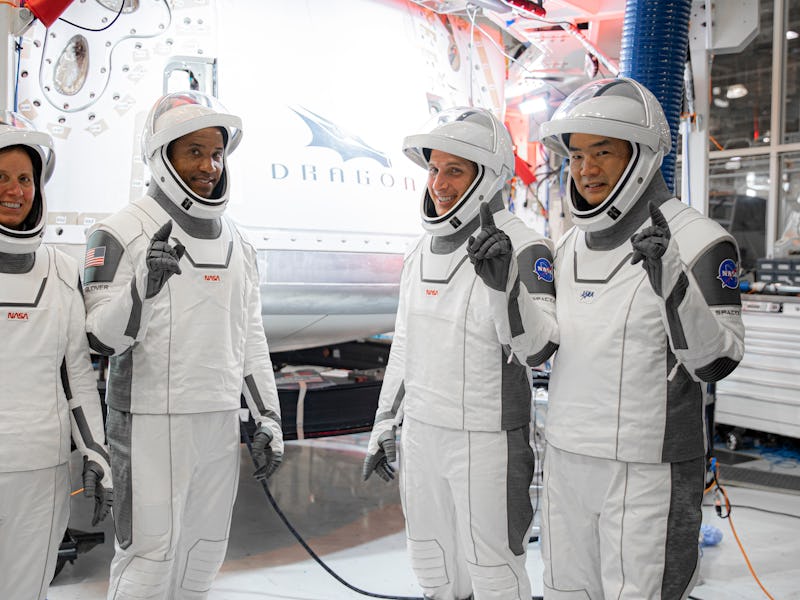SpaceX Crew Dragon: NASA astronauts reveal how tough trip will shape space travel
SpaceX Crew Dragon is about to embark on NASA's "Crew-1" mission. With this joint venture, the agency's astronauts will pave the way for future space travel.

SpaceX's Crew Dragon capsule is about to send four people into space — and their experiences will pave the way for future missions.
The human-carrying capsule will launch on a Falcon 9 rocket no earlier than 7:49 p.m. Eastern on November 14. The mission, dubbed "Crew-1," will lift off at Launch Complex 39A at the Kennedy Space Center in Florida. After a red-eye flight lasting some eight and a half hours, the capsule will dock with the International Space Station at around 4:04 Eastern on November 15.
Want to find out more about SpaceX's most ambitious missions? Check out Musk Reads+ for exclusive interviews, analysis, and more.
Eight hours stuck in a tiny pod will be a challenge. As the first four-person crew to fly in the Crew Dragon, their experiences with everyday issues like eating and using the restroom could inform future missions, and help them avoid any pitfalls.
"We’re going to be figuring out some of that as we go, because we’ll be the first crew on it with the four of us, a full crew,” Michael Hopkins, NASA astronaut and spaceflight commander on the Crew-1 mission, said in response to a press conference question from Inverse. Hopkins and others involved in the mission were speaking on Monday, November 9 at a media conference ahead of the mission launch.
One small step — This is a milestone in the development of SpaceX's Crew Dragon capsule, designed to help NASA ferry astronauts to and from the International Space Station after years of hitching rides on Russian Soyuz rockets.
The Crew Dragon completed its first crewed flight with Bob Behnken and Doug Hurley in May, but the Crew-1 mission will be the first time that all four seats are occupied. Hopkins will be joined by NASA astronauts Victor Glover and Shannon Walker. They will also be joined by Soichi Noguchi, an astronaut with Japanese agency JAXA and the first non-NASA astronaut to fly in the Crew Dragon capsule.
While Behnken and Hurley endured a 19-hour flight, Crew-1 should have a much easier time. Hopkins noted that the flight should be short enough that they will be able to skip sleep, but there's always the possibility that timings slip — and the team end up looking at a flight up to 27 hours long.
"Even if we do have our shortened rendezvous and get there in eight and a half hours, I know as a crew, we're going to evaluate the choreography that it takes to do things in that capsule so we can inform future crews when they have four people and will probably have longer on it," Walker also said in response to Inverse's question.
The Crew-1 team.
Future flights — Just like how Behnken and Hurley have helped future crew members — Hurley mentioned onboard the space station that he had advice about "where best to pack all your personal items" — the Crew-1 team's experience should help the next crew prepare for their flights, too.
Those flights could take place soon. The "Crew-2" mission, expected in spring 2021, will send up NASA astronauts Shane Kimbrough and Megan McArthur, plus European Space Agency astronaut Thomas Pesquet and JAXA astronaut Akihiko Hoshide. A "Crew-3" mission is expected in late 2021. Another mission in October will send up movie star Tom Cruise with director Doug Liman and NASA astronaut Michael Lopez-Alegria.
One area where the crew may not need to give advice is on using the restroom. Former NASA astronaut Garrett Reisman told Space.com that his experiences and agency data suggest that it's "kind of like going on a camping trip," and your body will hold it in during the capsule flight. Handy.
This article was originally published on